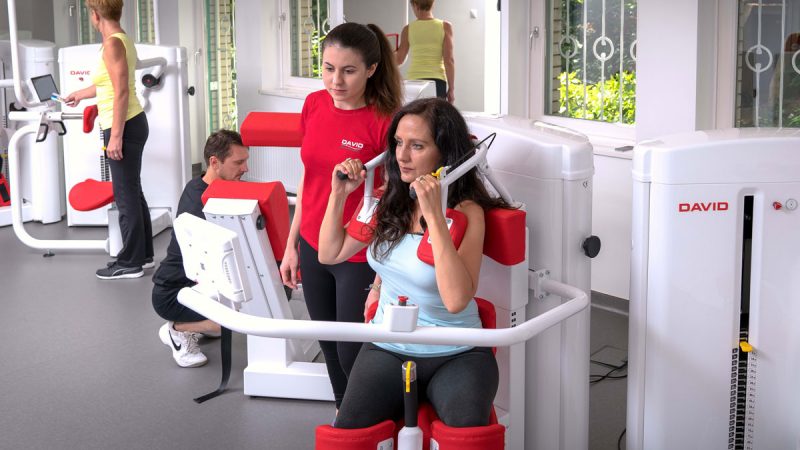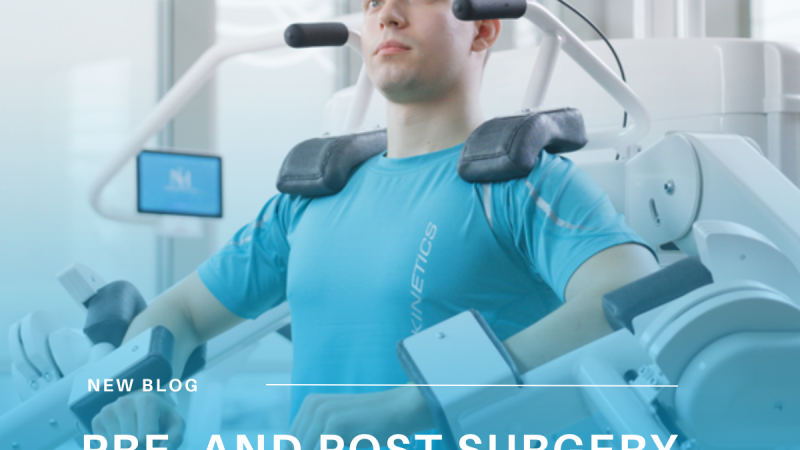The previous blog detailed how Air Combat Group documented the pilots’ injuries and investigated the cultural aspects of aircrew not reporting problems. The investigation found that the RAAF was losing the equivalent of 7 man-years of productivity each year across its fast-jet force, with the primary problem being neck problems. This posed both a massive economic and cultural problem for the RAAF, and they knew changes must be made.
The Air Combat Group adopted a conditioning program utilizing the David Spine Concept to condition and strengthen its aircrew. This second part details how the program developed into a maintenance and rehabilitation program which is being rolled out across the organization.
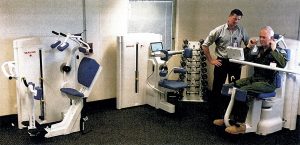
Being proactive through maintenance therapy
Once aircrew get to the high-G part of the IFC, the program switches from a conditioning to a maintenance phase where there is a system of monitoring the aircrew, so they maintain the standards achieved in the conditioning phase.
Williamtown Fighter Fit sports physiotherapist Toby Watson said the system functions through an app on their smartphone.
“The app was developed for us,” he said. “It looks at specifics such as pain and well-being, but it’s not designed to ground aircrew. It’s designed to identify potential problem areas early, so we’ll say, ‘Come and see us and do something about it’, rather than letting it turn into something bigger.
“The goal is to identify problems early rather than waiting for aircrew to get to a point where they need physio or other healthcare,” Watson said.
The goal is identify problems early rather than wait for aircrew to get to a point where they need physio or other healthcare.
“So, in being proactive we’re looking at things like general pain, sleep, fatigue and soreness, because those things are likely indicators that their bodies might not be responding as well as they could be.”
Toby Watson comes from an AFL, track and field and cycling background in physiotherapy, so he has worked with athletes who have competed in speed, strength, impact and endurance sports. As with these previous roles, his job is to identify what activities his patients are participating in and what injuries are they most at risk from, what they are currently strong enough to handle, and what work needs to be done to gain strength where they need it.
“So, we get a baseline screen to see where they’re at, where we think they need to be, and where they’re going to learn as we go,” he said.
“We’re on the leading edge of this so there isn’t a great body of evidence for us to work with, but we’re building that for ourselves. There is evidence in professional sport, however, and it’s just like building someone up for game day.
“And then on ‘game day’ we talk about what is an appropriate warm-up, how does it fit in the rhythm of their day with their brief, life support, walk to the jet and everything else. How can we make that fit?”

Watson draws a comparison between grand tour cycling teams and an air combat squadron, where the emphasis is on the recovery over a long period. “Post flight, what’s the cool-down look like where they have to go to debrief. We know they’ll lose a couple of litres of fluid in an hour, so we’ve got to make sure that if they’re going to ‘double-pump’ on the day that they’re not going to get dehydrated, because you can’t perform as well if you don’t hydrate properly.”
But Watson added that there are elements to consider from the other sports he’s worked in as well.
“Track and field is all about being really specific in what you prepare for, cycling is all about recovery and how well can you get yourself ready to go again, and AFL is all about being belted like the guys do in high-G BFM, so there’s a bit of each of them.”
Wallace and Watson now work full-time on the Fighter Fit program for Air Combat Group.
We’re now able to collect more data than before…to continue improving our program to reduce injury and manage risks for our aircrew.
“Part of the program was defining the resources that we need. We drew James from within Joint Health. He was our neck specialist here at Williamtown, and now he’s under contract to oversee the program across Air Force and the ADF,” said WGCDR Almenara.
“Together with RAAF Institute of Aviation Medicine, he’s also conducting a research program. We’re now able to collect more data than before, and we’ll be able to compare that data as the program progresses and see how the results of the program are going. This will help us to continue improving our program to reduce injury and manage risks for our aircrew.
“Toby is one of our on-site clinical physios. We specifically looked for people with sports physio backgrounds to get this program off the ground. We also have an exercise physiologist here who does all the functional movement work, injury management, and injury prevention that exercise physiologists manage. He also runs our spinal conditioning equipment.”
Targeting specific areas for rehabilitation
If any rehabilitation is required, ACG aircrew now have better access to treatment. Staff can access rehabilitation within their units and, most importantly, they have already developed a relationship with the ACG physiotherapists through the conditioning and maintenance work already undertaken.
The rehab program includes a range of high-end DAVID devices that allows the physios to measure the level of injury and to target specific areas for rehab and strengthening work.
“Early research led us to machines similar to weight machines, but they’re fully electronic and they’re networked,” WGCDR Almenara explained.
“They test a pilot’s range of movement, strength and endurance at very specific parts of the neck and back. They also isolate an individual movements to specific joint areas moving on the machine. This is beneficial because the human body will recruit other muscles to help that movement.
“We can get instant metrics, and can measure strength, range and endurance so we then tailor a conditioning program from that day.”
Machine trials with lead aircrew in 2017 found promising trends of improvements in strength in the targeted muscle areas after 12 weeks split into two six-week blocks. The promising trends from that initial small sample size have continued the program has been rolled out an ACG.
This has been one of the most interesting areas of the program considering how long we’ve known about aircrew having neck injuries.
“What we found was, in most tests we were above average in strength from the start,” WGCDR Almenas said. “However, in neck rotation we were significantly weaker than the average population. This was surprising since we assumed aircrew had strong necks because we’re putting them under load every day.
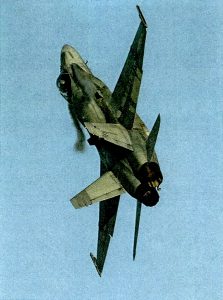
“The hypothesis here is that the soft tissue injuries we induce under G cause the body to protect and shut down those neck muscles, and then our bodies recruit other muscles in the back and shoulders to do the work. This causes other referred pain in the upper back. This has been one of the most interesting areas of the program considering how long we’ve known about aircrew having neck injuries.”
WGCDR Almenara said this is probably the first time the RAAF has started to look more closely at these rotation aspects and what’s going on with the associated muscles.
“As someone who has had neck pain for a number of years, all of this makes a lot of sense to me,” he said. “So, regardless of how accurate this data is in terms of the population reference, the fact that we are seeing these trends and the referred pain, it all points to conditioning these rotation muscles is really important to protect our necks and backs. It’s only a small sample size at the moment, but we have seen significant improvement in these symptoms so far with this conditioning.”
But apart from the challenge of how to implement Fighter Fit, there was still the issue of overcoming the fighter pilot’s natural tendency to live with pain, and the difficulty of finding the necessary time in their busy schedules.
‘We do need compliance otherwise we don’t mitigate anything,” said WGCDR Almenara. “It is now part of our duty of care, so it’s compulsory while aircrew are in training. We are conditioning their necks and backs to cope with their job requirements. It is part of ACG’s duty of care to make sure we don’t injure aircrew while they are doing their jobs as much as reasonably practical.
“For the rest of the aircrew, these tools are available for squadron executives to manage their risk on behalf of the Commander of ACG. We fit it into their flying program as flexibly as possible.”
The program won’t be compulsory for qualified aircrew, however compliance will be monitored and if squadron executives aren’t meeting recommended levels of compliance and fitness results, they’ll have to explain why. Indeed, rather than make it a burden, the program’s architects aim to appeal to and count on the natural competitive nature of the aircrew to ensure their units are compliant.
We are relying on our very competitive fighter pilot community to make it a cultural norm.
“We are relying on our very competitive fighter pilot community,” WGCDR Almenara said. “There is also an element of generational change as well. For all of the trainee aircrew, this is now a part of their normal daily work routine. Within three or four years’ time they’ll make up 80 percent of the squadrons, and it will then be the cultural norm.”
Creating a rollout across the RAAF organization
While Fighter Fit is currently being funded through ACG, its early success has led to considerable interest in adopting this model not only across other elements of ACG and Air Force, but also in other branches of the ADF.
Other areas in Air Force to consider the benefits of the DAVID device-based therapy program include the combat controllers from 4SQN, the loadmaster community within Air Mobility Group (AMG), and the air movements community within the RAAF’s Combat Support Group. Loadmasters are tasked with lifting heavy weights, tying downloads, and moving about confined spaces in a transport aircraft cargo hold, often during turbulent low-level flight. “Their injuries are different to fast jet aircrew, so Air Command and AMG are looking at possibly tailoring this program for loadmasters as well,” GPCAPT Hake said.
“Loadmasters get a lot of ‘black and blue’ due to the unsteady platform and the lifting and twisting and movement. Air Force is currently developing studies to try to identify their problems and their risk, and to implement some mitigation strategies.”
The Williamtown program has now been rolled out at RAAF Amberley, and similar programs are being implemented at Tindal and Pearce. The Williamtown facility is located in the 76SQN headquarters in space formerly occupied by the old Hawk simulators. This is a central location on base, so it is planned for it to remain there due to its proximity to the new F-35 squadron headquarters buildings being constructed across the road.
“The impact of driving around the base for 10 minutes to the gym and having to get changed for the drive over there, is enough for it just to be too much of an impact on the routine,” WGCDR Almenara said.
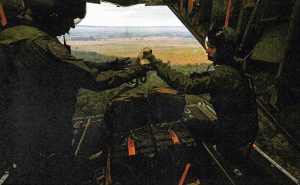
“So, with the amount that the squadrons have going on at the moment, I’m trying to make it as convenient as possible. The facilities at the other bases are being positioned with similar considerations in mind.
The early results have been so encouraging that, with word spreading through the fighter pilot network, some allied air forces have expressed an interesting in conducting their own program.
Partnering with allies to share best practices
” The early results have been so encouraging that, with word spreading though the fighter pilot network, some allied air forces have expressed an interest in conducting their own program.
“The Canadians have contacted me because they have defined their problem and they are very keen to understand our program and see what they can take away,” WGCDR Almenara said. ‘We have also had some interest from the US Navy. And the RAF is keen to see what we were doing after we went and looked at their program last year.”
It’s fair to say that the implementation and running of the device-based therapy program Fighter Fit costs real money, but the capability addition by ensuring more fighter aircrew are available to fly and potential savings the program can make in terms of preventing injuries or even early retirements cannot be understated.
The expense is a drop in the ocean by comparison and it’s going to have a much greater effect.
“At the end of the day, I don’t think the expense is that great compared to what it costs to train our people to fly our aircraft,” WGCDR Almenara said in closing. “It’s actually a fairly moderate expense, especially compared to all of the other engineering options we could have investigated. It’s a drop in the ocean by comparison and it’s going to have a much greater effect.”
This article was published in Australian Aviation magazine in September 2018
Bastiaan Meijer
 English
English 























